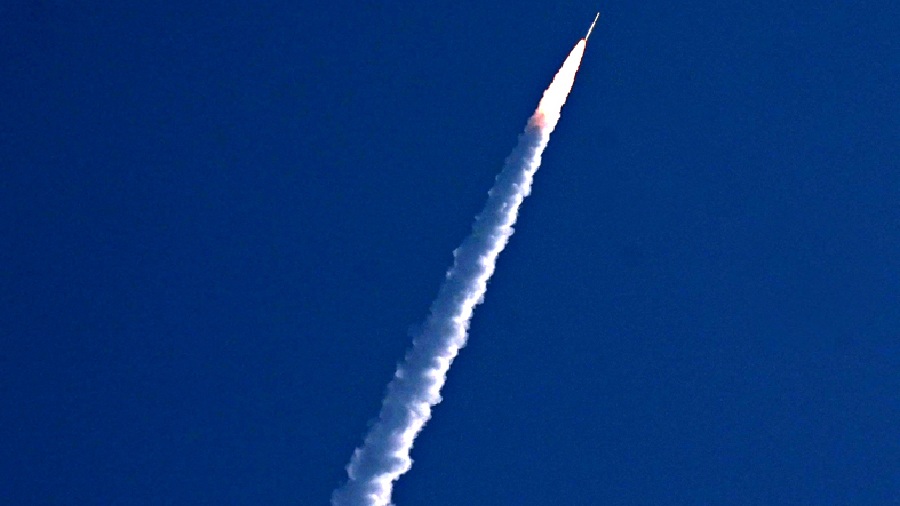India’s space agency on Friday celebrated its first new rocket in two decades with the successful launch of the Small Satellite Launch Vehicle (SSLV), six months after a maiden flight had failed to correctly place satellites in orbit.
In its second developmental flight on Friday, the SSLV lifted off from the Sriharikota spaceport at 9.18am, spewing white-orange fumes as it climbed into a clear sky and, about 15 minutes later, successfully placed three small satellites into their intended orbits.
“We now have a new launch vehicle,” said S. Somanath, the chairman of the Indian Space Research Organisation, who described the performance of the rocket and its navigation and guidance system as “exceedingly good”.
The SSLV ferried a 153kg Isro satellite named EOS-07 designed to test new technologies for future small operational microsatellites, a 10kg US-made satellite named Janus-1 for advanced experimental laser communications, radio communications and machine learning during orbit, and an 8kg Indian-made satellite named AzaadiSat-02 developed by schoolchildren.
Isro has described the SSLV as a new generation rocket designed to launch payloads up to 500kg and hopes to deploy the rocket to expand its commercial activities through low-cost, launch-on-demand services with quick turnaround times.
The SSLV is intended to join India’s set of fully operational rockets that include the Polar Satellite Launch Vehicle developed in the 1990s and the more powerful Geosynchronous Satellite Launch Vehicle developed in the early 2000s.
The first developmental flight of the SSLV on August 7 last year had placed its payloads — two Indian-made satellites — into wrong orbits after what Isro engineers had said appeared to be an otherwise successful 13-minute flight into space.
“We had a narrow miss then (with the first developmental flight),” Somanath said after Friday’s successful launch. “We analysed the problems with the first flight, identified the corrective actions, and implemented them very fast, and went through large amounts of simulations and studies to ensure that the vehicle will become a success this time,” he said.
Isro engineers implemented and tested the corrective actions within five months, S.S. Vinod, the mission director of the SSLV programme, said. “We had to realise five new hardware, a new separation system, and modifications to the navigation and guidance system and we carried out a lot of tests to make the system robust,” Vinod said. “The rigorous review mechanisms have helped us.”
Isro had until February 2022 launched 129 Indian satellites and 342 foreign satellites for customers from 36 countries since the PSLV first launched satellites for South Korean and German agencies in 1999.

